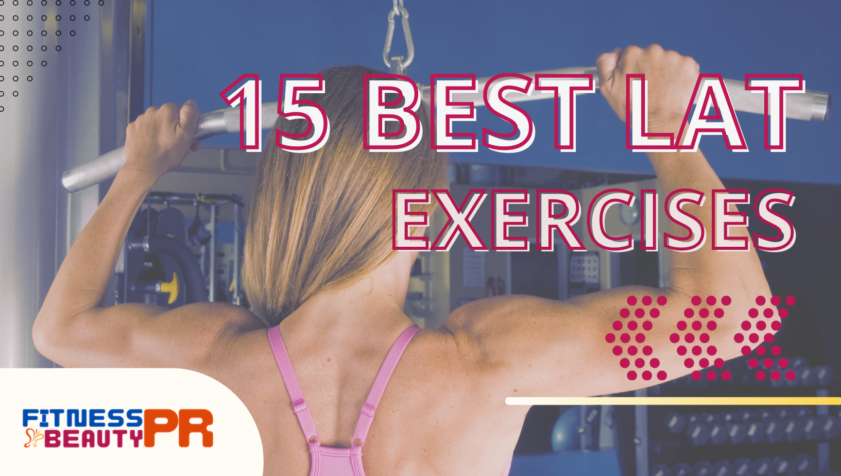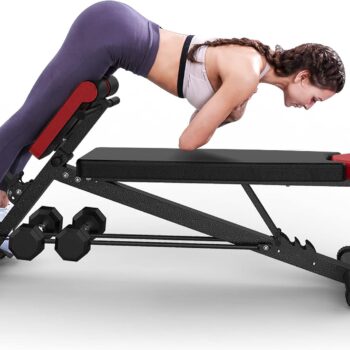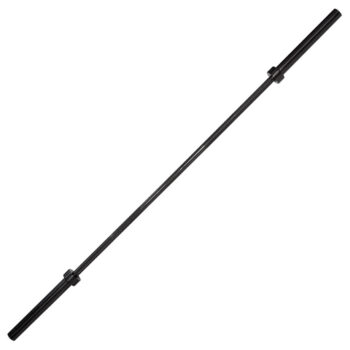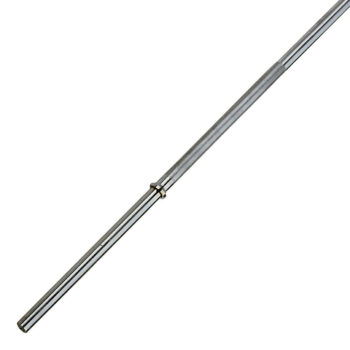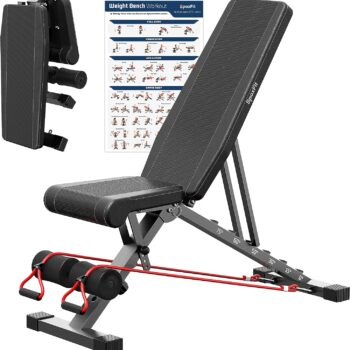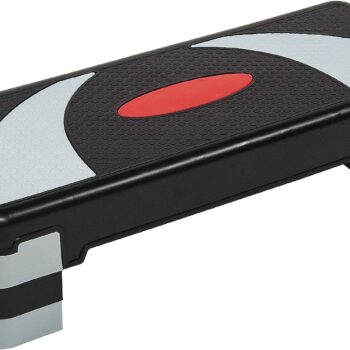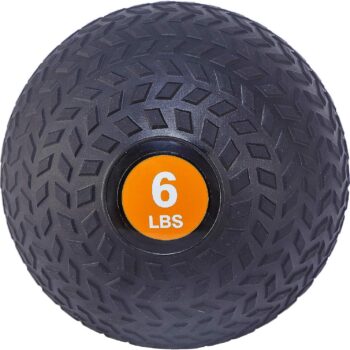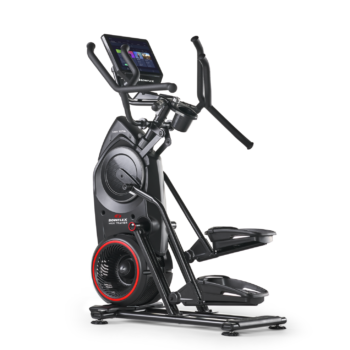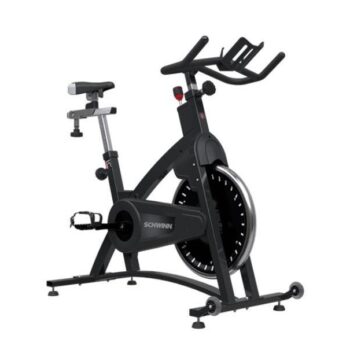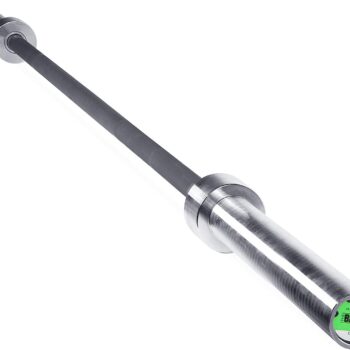Striving for that coveted V-shaped back? You’re in the right place. Our guide zeroes in on the best lat exercises to widen and define your lats, helping you achieve the V-tapered look that symbolizes strength and aesthetics. Ditch the fluff – let’s focus on effective workouts that deliver results. Read on to discover tried-and-true exercises that cater to your goal.
Best Lat Exercises – Key Takeaways
-
Lat exercises are essential for building a V-shaped back, improving posture, and increasing upper body strength, with the latissimus dorsi muscle being central to pulling movements and functional strength.
-
A balanced lats exercises workout routine should include both compound and isolation exercises, performed at least once a week, to maximize muscle growth, strength gains, and posture improvement.
-
Proper form, progressive overload, and adequate nutrition are critical for effective lat development, with an emphasis on protein intake and essential nutrients to support muscle growth and recovery.
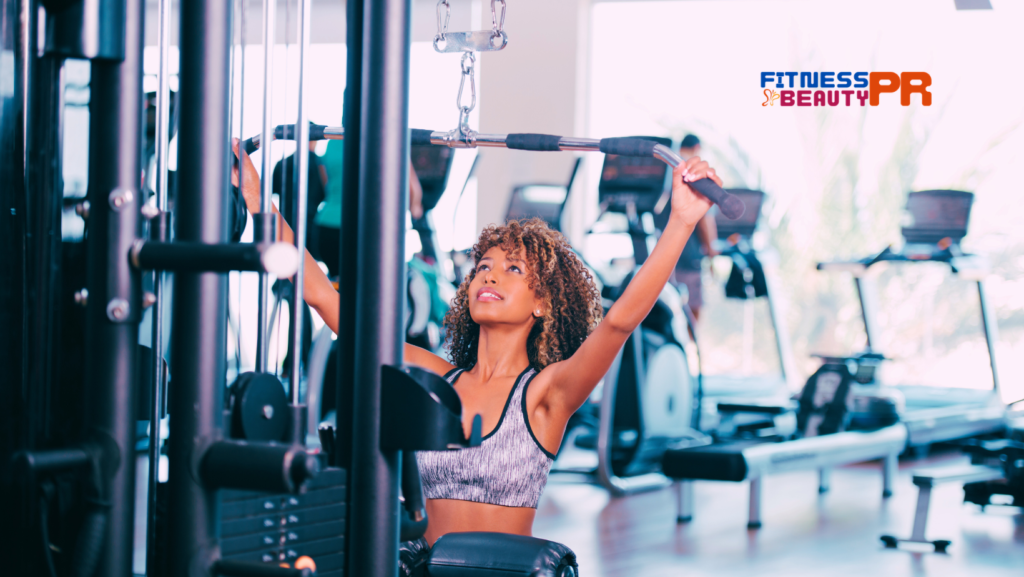
The Importance of Lat Exercises
Lat exercises are essential in achieving a well-balanced physique, improved posture and increased upper body strength. The latissimus dorsi muscles play an important role in pulling motions that lead to greater fitness capabilities as well as daily activities like climbing stairs or carrying groceries. Working out with dumbbell pullovers at the lat pulldown station will help build fan shaped muscles which contribute towards sculpting your upper back for better definition leading to a V-taper torso shape. Barbell rows can also be included for additional strengthening of the lats area where other forms of exercise might fall short on their own.
Anatomy of the Lats
The largest muscle of the upper body, referred to as latissimus dorsi or lats, are a fan-like pattern that covers the lower and middle region in the back area. These muscles have various sources including ribcage, iliac crest of hip bone and thoracolumbar fascia while ending up on humerus, which is an upper arm bone. Its primary purpose is providing support for shoulder movements along with actions from arms like pulling. At the same time, it also stabilizes spine joints too.

As far as its shape goes, these triangular shaped Latissimus Dorsi give wings to butterfly impressions due to their wider size regarding other muscles positioned in back location. There are numerous functions performed by this substantial group such as lifting weights above head level, rowing activities etc whereas principally they extend power when moving trunk downwards towards legs. Finally aiding stronger grip and steady limb posture gives them added benefits over others present near the core region, making them able to accomplish daily tasks without any hassles easily.
Best Lat Exercises – Building Your V-Shaped Back
Achieving a V-shaped back is possible with the right training plan. Doing exercises like Lat Pulldown using an underhand grip are ideal for targeting and building strength in lats, as well as creating a strong mind to muscle connection during movement. Specifically when doing pulldowns, hands should be pulled directly down to chest level while contracting lat muscles at its lowest point of motion which results in better overall workout compared traditional pull ups.
To get maximum benefit from these workouts it’s important to emphasize on strengthening latissimus dorsi (lats) that gives power throughout your upper body making up the desired ‘V’ shape we strive for! So next time you visit gym, make sure adding variety of different exercises into routine will give successful long term outcomes.
15 Best Lat Exercises
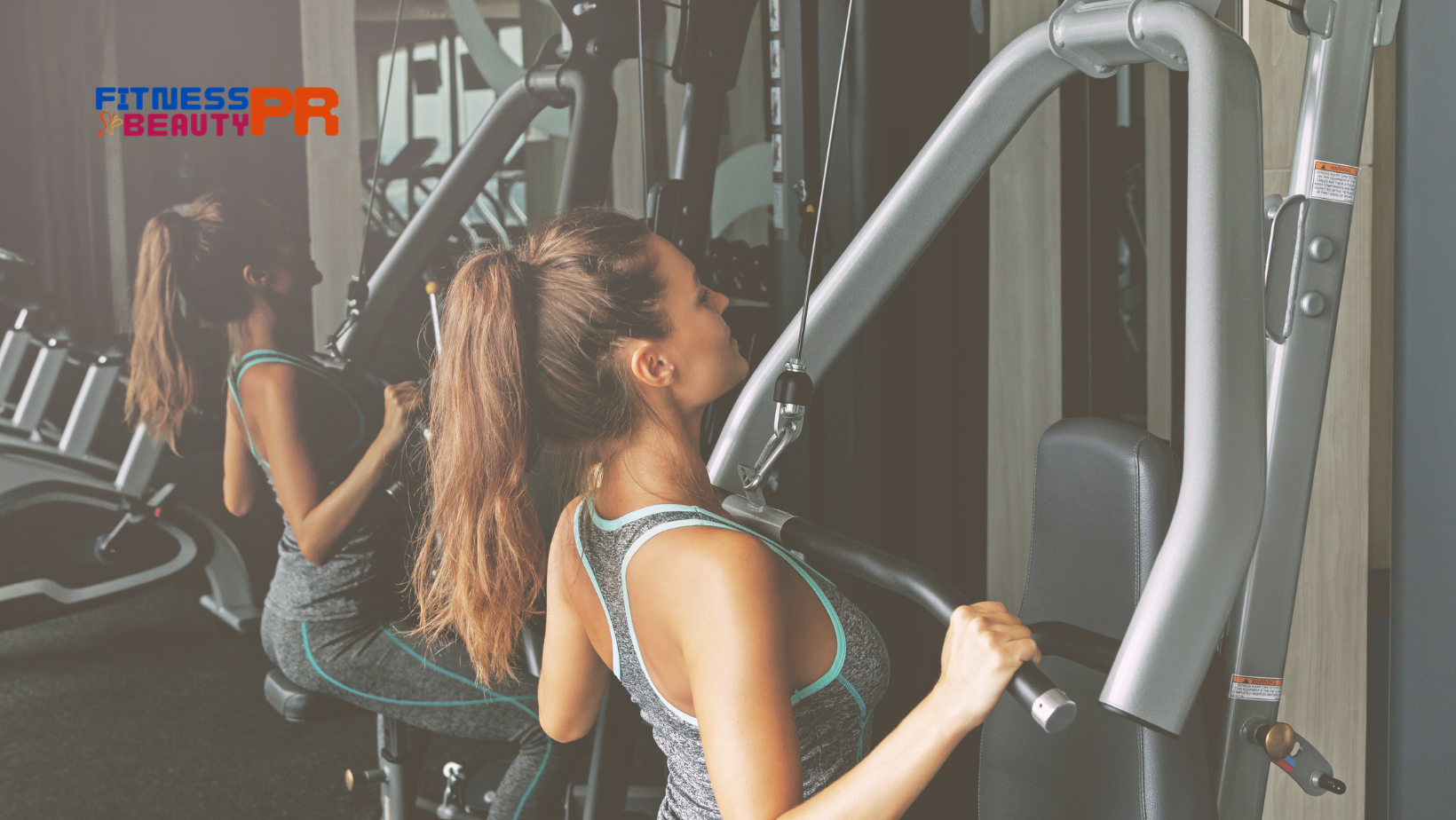
Looking to take your training up a notch? Here are 15 of the top exercises specifically created to build a strong, well-defined back. Every exercise comes with an in-depth explanation and advantages it can give for developing your legs.
1. Wide-Grip Pull-Ups
Wide-Grip Pull-Ups are a fundamental exercise in any back-building workout regimen. This exercise involves grasping a pull-up bar with a grip wider than shoulder-width and pulling your body upwards until your chin is above the bar. The key muscle group targeted during this exercise is the lats. The wide grip allows for a greater stretch at the bottom of the movement, which can lead to a more intense workout for the lats. This exercise not only strengthens and broadens the lats, but also enhances the V-shaped appearance of the back.
Step 1: Stand with your feet hip-width apart and your knees slightly bent.
Step 2: Grasp the pull-up bar with a grip wider than shoulder-width using a pronated hold.
Step 3: Pull your body upwards until your chin is above the bar, completing one wide grip pull-up. This exercise primarily targets the latissimus dorsi muscles and other areas like the trapezius or thoracic erector spinae, while also engaging the rhomboids.
Step 4: For added intensity, perform the exercise frequently with shoulder distance between both feet.
Note: Be aware that improper form may cause harm due to the extra strain placed on the shoulders. Exercise caution and ensure proper technique before and during the exercise.
2. Close-Grip Chin-Ups
Close-Grip Chin-Ups are an excellent exercise for targeting the lats. This exercise involves positioning your hands closer than shoulder-width apart on a chin-up bar and pulling your body upwards. By using a close grip, you can engage the latissimus dorsi muscles more effectively and directly than with a wider grip. The contraction and extension of the lats during the upward and downward motion of the exercise respectively, leads to a more intense workout, thus promoting muscle growth and strength in the lats. It’s a great exercise to add to your routine if your goal is to build a strong, V-shaped back.
Step 1: Stand underneath the chin-up bar, positioning your hands with a narrow and supinated grip. This grip targets the biceps and lower traps more effectively.
Step 2: Ensure your whole body is ready to engage in the exercise. This includes your lower body – brace your abs and squeeze your glutes. Breath control is also vital for stabilization.
Step 3: Begin the exercise by pulling your whole body upwards. Your range of motion should not be limited – strive to pull yourself up until your head reaches above the bar level.
Step 4: Maintain proper form throughout the exercise. Any signs of poor form should be corrected immediately to prevent slowing down progress or increasing the risk of injury.
Step 5: Lower your body back down in a controlled manner to complete one rep of Close-Grip Chin-Ups.
Note: Remember, the end goal of this exercise is to pull your whole body up until reaching the bar level above your head. Always perform Close-Grip Chin-Ups with precision.
3. Bent-Over Barbell Rows
Performing Barbell Rows is a beneficial way to enhance strength and build muscle, especially focusing on the back muscles, which are part of the posterior chain. Here’s a step-by-step guide to help you get the most out of this exercise:
Step 1: Start by standing straight, holding a barbell with both hands shoulder-width apart. Your palms should be facing towards you.
Step 2: Bend at your hips and knees, and lower your torso until it’s almost parallel to the floor. Keep your back straight.
Step 3: Pull the barbell to your upper waist, keeping your elbows close to your body.
Step 4: Lower the barbell back to the starting position, fully extending your arms and shoulders.
Step 5: Repeat this for three sets of 8-10 repetitions. This balance of sets and reps is effective for both strength gains and muscle growth.
Note: Always maintain proper form and control when performing this exercise to prevent injury and maximize results.
Implementing this reliable routine will help you achieve your desired outcomes related to barbell rows or any other pull exercise that specifically targets the posterior chain!
4. Single-Arm Dumbbell Rows
Single-Arm Dumbbell Rows are an excellent exercise for isolating and strengthening the lats. This exercise involves pulling a dumbbell upwards while maintaining a bent-over position. It’s a great addition to your workout routine if you’re aiming for a well-defined, V-shaped back.
Step 1: Stand next to a flat bench and place one knee on it. Bend at your waist, keeping your back straight.
Step 2: Pick up a dumbbell with your free hand, keeping your arm fully extended.
Step 3: Pull the dumbbell upward until it touches your chest, then lower it back down in a controlled manner. Remember to keep your back straight and your core engaged throughout the exercise.
Step 4: Repeat for the desired number of reps, then switch to the other side.
Note: Always keep your back straight to prevent injury and ensure maximum muscle activation.
5. T-Bar Rows
T-Bar Rows are a compound exercise that targets the lats and other major muscles in the back. This exercise involves pulling a loaded T-bar towards your chest while maintaining a bent-over position.
Step 1: Stand over the T-bar with your feet shoulder-width apart.
Step 2: Bend at your hips and knees, and grasp the handles of the T-bar.
Step 3: Pull the bar towards your chest, squeezing your shoulder blades together at the top of the movement.
Step 4: Lower the bar back to the starting position in a controlled manner.
Step 5: Repeat for the desired number of reps.
Note: Maintain a straight back and avoid rounding your shoulders to prevent injury and maximize muscle engagement.
6. Seated Cable Rows
Seated Cable Rows are a great exercise for targeting the lats and other muscles in the back. This exercise involves pulling a cable towards your body while maintaining a seated position.
Step 1: Sit at a low pulley cable station and place your feet on the platform, knees slightly bent.
Step 2: Grasp the cable handle and sit back with your arms fully extended.
Step 3: Pull the handle towards your waist, squeezing your shoulder blades together at the end of the movement.
Step 4: Slowly extend your arms back to the starting position.
Step 5: Repeat for the desired number of reps.
Note: Keep your back straight and avoid leaning back as you pull the handle towards your body.
7. Dumbbell Pullovers
Dumbbell Pullovers are an effective exercise for developing the lats and expanding the rib cage. This exercise involves moving a dumbbell over and behind your head while lying on a bench.
Step 1: Lie on a flat bench with a dumbbell resting on your chest. Hold the dumbbell with both hands.
Step 2: Extend your arms and lift the dumbbell over your head.
Step 3: Lower the dumbbell in an arc behind your head until your arms are level with your body.
Step 4: Pull the dumbbell back up in the same arc.
Step 5: Repeat for the desired number of reps.
Note: Keep your arms slightly bent to prevent strain on your elbows.
8. Inverted Rows
Inverted Rows are a bodyweight exercise that targets the lats and other muscles in the back. This exercise involves pulling your body upwards while maintaining a horizontal position underneath a bar.
Step 1: Set a bar in a rack at waist height. Stand underneath the bar and grab it with an overhand grip.
Step 2: Hang beneath the bar with your body straight, heels touching the ground and arms fully extended.
Step 3: Pull your chest up to the bar, squeezing your shoulder blades together at the top of the movement.
Step 4: Lower yourself back down in a controlled manner.
Step 5: Repeat for the desired number of reps.
Note: Keep your body straight and avoid swinging or using momentum to pull yourself up.
9. Dumbbell Deadlifts
Dumbbell Deadlifts are a compound exercise that targets the lats, glutes, and hamstrings. This exercise involves lifting a pair of dumbbells from the ground to hip level.
Step 1: Stand with your feet hip-width apart, and hold a dumbbell in each hand with your arms fully extended and palms facing towards your body.
Step 2: Bend at your hips and knees, keeping your back straight. Your torso should be almost parallel to the floor.
Step 3: Lift the dumbbells from the floor by extending your hips and knees, keeping your back straight. The dumbbells should be at hip level when you reach the top of the movement.
Step 4: Lower the dumbbells back to the floor in a controlled manner.
Step 5: Repeat for the desired number of reps.
Note: Keep your back straight and avoid rounding your shoulders to prevent injury and maximize muscle engagement.
10. Pendlay Rows
Pendlay Rows are a compound exercise that targets the lats and other major muscles in the back. This exercise involves pulling a loaded barbell towards your chest while maintaining a bent-over position.
Step 1: Stand over the barbell with your feet shoulder-width apart.
Step 2: Bend at your hips and knees, and grasp the barbell with a pronated grip.
Step 3: Pull the barbell towards your chest, keeping your elbows close to your body.
Step 4: Lower the barbell back to the starting position in a controlled manner.
Step 5: Repeat for the desired number of reps.
Note: Maintain a straight back and avoid rounding your shoulders to prevent injury and maximize muscle engagement.
11. Lat Pushdowns
Lat Pushdowns are an isolation exercise that targets the lats. This exercise involves pushing a loaded cable downwards while keeping your torso upright.
Step 1: Stand in front of a high pulley machine with a straight-bar attachment.
Step 2: Grasp the bar with an overhand grip, hands shoulder-width apart.
Step 3: Push the bar downwards until your arms are fully extended, keeping your elbows close to your body.
Step 4: Slowly return the bar to the starting position.
Step 5: Repeat for the desired number of reps.
Note: Keep your back straight and avoid leaning forward or backward during the exercise.
12. Underhand Cable Pulldowns
Underhand Cable Pulldowns are a variation of the lat pulldown that targets the lats and biceps. This exercise involves pulling a loaded cable towards your chest while keeping your torso upright.
Step 1: Sit at a high pulley machine with a straight-bar attachment.
Step 2: Grasp the bar with an underhand grip, hands shoulder-width apart.
Step 3: Pull the bar downwards until it touches your upper chest, keeping your elbows close to your body.
Step 4: Slowly return the bar to the starting position.
Step 5: Repeat for the desired number of reps.
Note: Keep your back straight and avoid leaning backward during the exercise.
13. Kneeling Single Arm Rows
Kneeling Single Arm Rows are a unilateral exercise that targets the lats. This exercise involves pulling a dumbbell towards your body while maintaining a kneeling position.
Step 1: Start by kneeling on a bench with one knee, while the other foot remains on the floor.
Step 2: Hold a dumbbell in the hand on the same side as the foot on the floor, with your arm extended towards the ground.
Step 3: Pull the dumbbell upwards towards your waist, keeping your elbow close to your body.
Step 4: Lower the dumbbell back down in a controlled manner.
Step 5: Repeat for the desired number of reps, then switch to the other side.
Note: Always keep your back straight to prevent injury and ensure maximum muscle activation.
14. Lat Pulldowns
Lat Pulldowns are a compound exercise that targets the lats and other major muscles in the back. This exercise involves pulling a loaded cable downwards while keeping your torso upright.
Step 1: Sit at a high pulley machine with a straight-bar attachment.
Step 2: Grasp the bar with an overhand grip, hands shoulder-width apart.
Step 3: Pull the bar downwards until your arms are fully extended, keeping your elbows close to your body.
Step 4: Slowly return the bar to the starting position.
Step 5: Repeat for the desired number of reps.
Note: Keep your back straight and avoid leaning forward or backward during the exercise.
15. Straight-Arm Pulldowns
Straight-Arm Pulldowns are an isolation exercise that targets the lats. This exercise involves pushing a loaded cable downwards while keeping your torso upright.
Step 1: Stand in front of a high pulley machine with a straight-bar attachment.
Step 2: Grasp the bar with an overhand grip, hands shoulder-width apart.
Step 3: Push the bar downwards until your arms are fully extended, keeping your elbows close to your body.
Step 4: Slowly return the bar to the starting position.
Step 5: Repeat for the desired number of reps.
Note: Keep your back straight and avoid leaning forward or backward during the exercise.
Techniques for Maximizing Lat Growth
For maximum muscle growth in the lat region, progressive overload is essential. This involves steadily raising the pressure placed on your body during exercise to gain bigger and stronger muscles. Proper form when exercising should be observed as it encourages maximal activation of legs while maintaining correct posture for protection from injuries. By having good alignment, you can improve overall back health significantly while avoiding any muscular harm at all times.
Best Lat Exercises – Compound vs. Isolation Exercises
When it comes to exercising the legs, both compound and isolation movements are crucial. Compound exercises such as Pull-ups, Chin-ups, Bent over Rows (barbell), Dumbbell Rows and Deadlifts (barbell) can help develop multiple muscle groups simultaneously for maximized strength gain and enhanced intramuscular coordination. Isolation activities like Standing Straight Arm Bar / Rope Lat Pulldowns, Two Armed Side Cable Lat Pulldowns or even Flat/Incline/Decline variants of Pullovers also have their place in lat training by targeting those muscles specifically. For optimal outcomes when working out your lats, combining these two types of exercise is recommended – Compounds for larger scale multi muscular work combined with Isolations specific attention on target areas in question!
Creating a Balanced Lat Workout Routine
Having a comprehensive workout plan is important for attaining desired results in training. It needs to take into account the overall posture of the body and its role in having good form. Exercises targeting legs should be done at least once every week, with an aim of aiming them 1-2 times each week instead. 3-4 sets ranging from 6, 8 reps are recommended per session as well. Rest periods which range anywhere between 30 seconds or less up to 5 minutes can help find balance when it comes to executing successful exercises sessions.
Beginner-Friendly Best Lat Exercises
For individuals just getting into strength training, a great way to target the lat muscles is by doing various dumbbell-based exercises like rows, deadlifts and pullovers. These all focus on perfecting form as well as toning the legs. For those who don’t have access to any gym equipment or weights, there are plenty of different no-equipment alternatives such as Pulse Row Holds, Wide Grip Pull Ups, Belly Penguins etc that can be done at home with minimal effort. Also Renegade Rows Supermans Resistance Band Lat Pulldowns and Wide Arm Pushups will help tone up your lats effectively without having an array of workout machines around you!
Advanced Lat Exercises for Increased Intensity
For those looking to make the most out of their workout, advanced exercises can provide an intense routine. Among these are dumbbell rows with bands, pull-ups using a wide grip, Pendlay and V-bar sternum varieties for improved muscle growth in this area. Another type is straight arm pushdowns as well as cable rows which focus on activating lats along with shoulders and hips while maintaining core stability.
Finally there’s the classic lat pulldown exercise that targets strength increase through postural pre-tensioning efforts but needs good form maintenance throughout all movements if desired results should be achieved quickly enough for one’s liking.
Home-Based Lat Workouts
If you want to focus on lat muscles in your workout from the comfort of home, there are several exercises which require minimal equipment. Pull-Ups and Chin-Ups, as well as Bodyweight Pullovers provide great benefits for training athletes without any additional fitness gear. Utilizing dumbbells by doing Bent-Over Rows or One-Arm Rows would also be beneficial. They do not require much space either. Finally Resistance bands offer a versatile way to train one’s legs at home, all that is needed are some quality resistance bands!
Best Lat Exercises: Safety Tips
Before performing lats exercises such as the lat pulldown, make sure to warm up and establish a good starting position properly. During exercise, grip the bar with a wide hand span while pulling down until it is level with your chin, simultaneously squeezing together shoulder blades and lats. Not following correct technique can result in several adverse effects. Potentially causing stress on the anterior joint capsule of shoulders which may lead to impingement or rotator cuff tears, damaging Latissimus dorsi muscles along with upper part body trauma, and sprains/injuries occurring anywhere from head-to-toe. Maintaining appropriate form during these workouts will not only help avoid injury but also ensure successful activation of targeted areas like back muscles.
The Role of Nutrition in Lat Development
In order to ensure strong lat muscle growth and optimum back development, it is essential to practice proper nutrition. Calories and protein are two of the most important dietary components necessary for supporting this goal. For successful results, these must be consumed in adequate amounts at specific times throughout the day. Essential nutrients that maintain optimal health of the muscles include calcium, magnesium, potassium, zinc B vitamins (including Vitamin B9), vitamin D, Omega-3 fatty acids as well as Vitamin C. This will help strengthen your legs while also benefiting their overall appearance over time!
The ultimate goal of having a V-shaped back is attainable with the correct combination of exercises, form and nutrition. This guide will provide everyone (from beginners to advanced fitness fanatics) with all that they need in order to develop strong legs for an overall impressive physique. Use this information properly so you can begin your journey towards achieving outstanding results!
Achieving that V-shaped back is not just about looking good, it’s about feeling good too. It’s about the confidence that comes with knowing you’re at your physical best. It’s about the satisfaction of setting a goal and then smashing it. And most importantly, it’s about the health benefits that come with regular exercise and good nutrition.
Whether you’re just starting out on your fitness journey or you’re an experienced gym-goer looking for new challenges, this guide has something for you. With a range of exercises to target all areas of your lats, tips on maintaining correct form to avoid injuries, and advice on the right nutrition to support muscle growth and recovery, this guide is your one-stop shop for all things related to lat development.
Remember, everyone’s body is different, and what works for one person may not work for another. Listen to your body, adjust your routine as needed, and don’t be afraid to seek professional advice if you’re unsure about anything. Most importantly, enjoy the journey. Fitness is not just a destination, it’s a way of life. Let’s get started on building those strong, impressive lats!
Best Lat Exercises: Frequently Asked Questions
What is the most effective lat exercises?
For overall back development, three of the most efficient exercises for lats are Weighted Pull-up, Wide Arm Reverse Pulldown and Meadows Row. All of them focus on different parts but together can help to achieve great results.
How can I increase my lats size?
If you want to build up your lat muscles, consider adding exercises such as pull-ups, cable rows, barbell rows, deadlifts and pulldowns into your fitness routine. These specific movements help target and develop the legs effectively for optimal growth.
How do I target my lats more?
To focus on developing your lats, consider adding exercises such as seated resistance band rows, lat pulldowns with a wide grip and bent-over barbell rows to your upper part body workout. All of these activities will specifically target the muscles in this area while also helping improve overall stability in the upper part of your body.
What are the benefits of exercises for the lats?
The exercises are essential for developing strong upper body muscles and attaining good posture. They can give you greater upper part body strength, enabling your physique to be more well-proportioned.
What precautions should I take when performing lats exercises?
Before beginning any exercises, one should warm up for the sake of safety and effectiveness. It is also important to keep proper form when performing these movements in order that they can be done without risk of injury while ensuring maximum muscle engagement.
Home Gym Essentials
-
Bowflex SelectTech 1090 Dumbbells
$799.00Original price was: $799.00.$699.00Current price is: $699.00. -
SMARTRAVEL Electric Bike
$1,699.99 -
Finer Form Home Gym Weight Bench
$299.99Original price was: $299.99.$179.99Current price is: $179.99. -
SpoxFit Adjustable Workout Bench
$179.99Original price was: $179.99.$119.99Current price is: $119.99.

